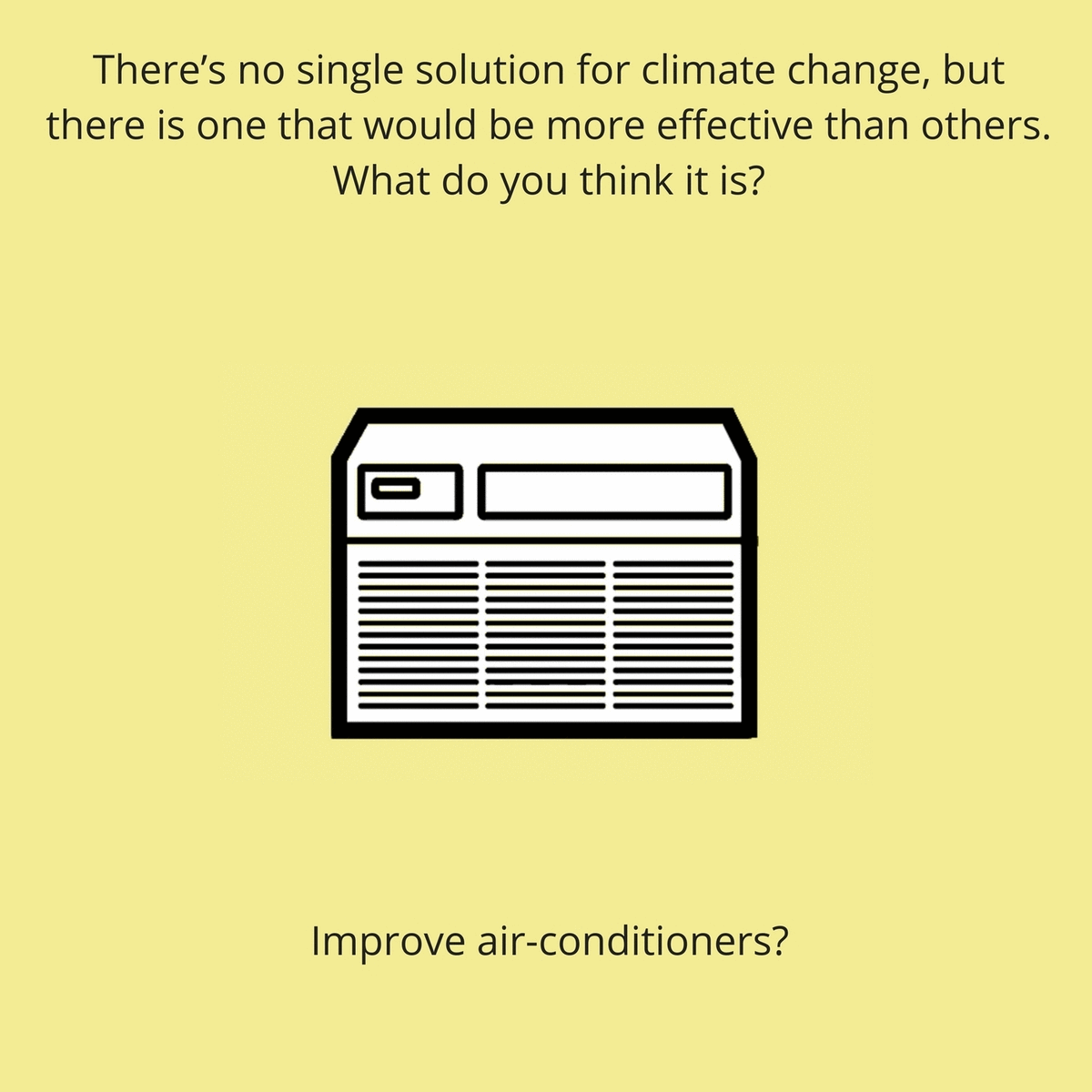The Quest for a Better Air Conditioner

In a warming world, air conditioning must become super efficient
7 July 2017, Washington, D.C. –As the world prepares to replace current refrigerants with climate-friendly alternatives, there is an opportunity to increase energy efficiency of air conditioners and other cooling equipment, cutting air pollution and saving consumers money on their electricity bill.
The success of this dual strategy would avoid an additional 100 billion tons of CO2, while providing an expanding market for U.S. industry that has already invested in the development of climate friendly refrigerants in anticipation of the last year’s amendment to the Montreal Protocol that now mandates the phase down of current hydrofluorocarbons (HFC) refrigerants that is estimated to itself avoid up to 100 billion tons of CO2 or more.
Air conditioning (AC) use is responsible for a large and increasing fraction of electricity demand and peak load, particularly in large metropolitan cities in emerging economies and hot climates. For example, space cooling uses 40-60% of the summer peak electric load in Delhi, India. A simultaneous transition to the use of climate-friendly refrigerants in the world stock of room ACs with a ~30% improvement of efficiency would avoid peak load equivalent to over 1,500 power plants by 2030, reducing CO2 along with other air pollutants associated with AC use while minimizing cost.
These are the conclusions of a report for the Institute for Governance & Sustainable Development (IGSD) in Washington, DC and Paris written by researchers at the U.S. Department of Energy’s Lawrence Berkeley National Laboratory. The report, “Opportunities for Simultaneous Efficiency Improvement and Refrigerant Transition in Air Conditioning,” reviews the hydrochlorofluorocarbons (HCFC) and hydrofluorocarbons regulatory frameworks, energy efficiency standards, and labeling programs in 19 countries that account for roughly 65% of global AC demand.
“Project Drawdown ranks the HFC transition as the single biggest climate mitigation opportunity available today, and now we can double that with the parallel AC efficiency strategy,” said Durwood Zaelke, President of IGSD. “Our ultimate goal with this tandem strategy is to avoid a full 1°C of warming by the end of the century.”
A $52 million Kigali Cooling Efficiency Program was established in the lead up the Kigali Amendment to help developing countries make the transition to more efficient cooling equipment while phasing down HFCs. The World Bank also announced a $1 billion loan fund to ramp up appliance efficiency while phasing down HFCs.
“Previous refrigerant transitions under the Montreal Protocol have catalyzed energy efficiency improvements of cooling appliances in the range of 30 to 60%, and the focused strategies identified here can do even more this time,” Zaelke added.
HCFCs and HFCs are used primarily as refrigerants in ACs and other refrigeration systems, and are the fastest growing category of greenhouse gases. They are super greenhouse gases that can be up to 4,000 times more potent warmers than CO2. In a warming world, global AC use is growing fast, driven by demand in emerging economies with hot climates and rising incomes that are also undergoing rapid urbanization and electrification.
The Parties to the Montreal Protocol agreed on a global schedule to phase down HFCs last October. Called the Kigali Amendment because it was agreed in the capital of Rwanda, this amendment will avoid nearly 100 billion tons of CO2 by 2050 and up to 0.5°C of warming by 2100.
“This report builds on our previous work in this field and identifies key opportunities to improve efficiency globally in tandem with the Montreal Protocol and keep costs low for consumers,” said lead researcher Dr. Nihar Shah at Lawrence Berkeley National Laboratory, a DOE national laboratory managed and operated by The Regents of the University of California.
All 19 countries reviewed have energy efficiency improvement policies such as standards, labels in place, with minimum efficiency levels for the most common types of room ACs. Some of these policies, however, have not been revised for over 10 years, and the minimum efficiency levels can vary by more than a factor of two. Policy recommendations to address higher standards, costs, and the speed of policy development are described to ensure current and future market transformation programs produce the greatest benefit possible to consumers, producers, and the environment. Government procurement focusing on super efficient AC, and private buyers clubs that do the same by aggregating demand to drive up efficiency and drive down prices are other strategies, along with import/export restrictions.
The full LBNL report is here.
LBNL’s earlier report on AC efficiency, Benefits of Leapfrogging to Superefficiency and Low Global Warming Potential Refrigerants in Air Conditioning (2015), is here.